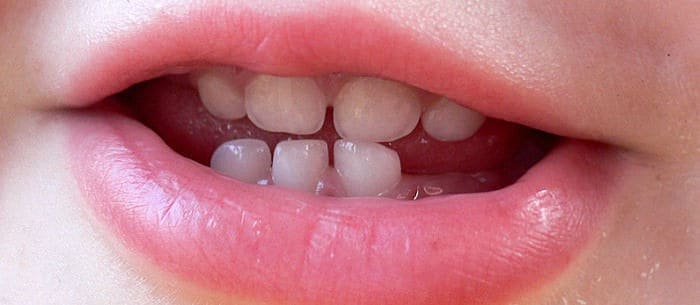Going from a cute, gummy smile to a mouthful of pearly whites takes a baby several years to accomplish. That first tiny tooth is a milestone — and adorable to see! But when can you expect that first tooth and all the others to follow?
Here’s what experts say you can expect in terms of baby teeth order of appearance:
Call to Order
A baby typically gets that first tooth at about 6 months of age, says Dr. Jennifer Satterfield-Siegel, a pediatric dentist with Special Smiles Dentistry in Indianapolis. But all babies are different. “If your child is born prematurely you have to do the corrected age. For example, if your child was born a month early, the teeth may erupt at 7 months instead of 6,” she explains.
Typically, baby teeth order goes like this:
- The Front Bottom Incisors Are First to show Themselves
They make an appearance two at a time at around 6 months of age. “The lower front incisors come in first, followed by the upper two incisors,” says Dr. Allan Pike, a pediatric dentist in Portland, Ore., and author of Pediatric Dentistry: Building A No-Fear Practice.
- Next, the Upper Lateral Incisors Erupt
These are next to the incisors, and they break through almost six months later. “There is about a six-month gap before the teeth next to the front incisors, called the lower and upper canines, come in,” says Dr. Satterfield-Siegel. These upper canine or ‘dog teeth’ fill the gap between the incisors and first molars when your baby is about 16 to 22 months old.
- Rounding out That Beautiful Smile are the Primary and Secondary Molars
These are in the back of the mouth. They start showing up when the child is about 2 1/2 to 3 years old.
All in Good Time
Don’t worry about when baby teeth come in, says Dr. Satterfield-Siegel. “Don’t get bent out of shape if it doesn’t go as planned, but make a mental note that if Johnny got his teeth in late, he might lose them later,” she says.
When should you be concerned? “If your child hasn’t gotten any teeth by a first birthday, you should talk to your dentist, but it really still isn’t that big of a concern,” adds Dr. Satterfield-Siegel. “Sometimes kids who get them that late will then get them all at the same time. Unless your child has a syndrome or you have a family history of missing teeth, don’t get too worried.” Dr. Pike says that in his 40-year career he’s only seen a few children who have gotten teeth out of order, or not at all, and that was due to serious metabolic problems.
Tooth Care
Bring your child to a pediatric dentist about the time that a first tooth erupts or by the time the child is 12 months old, says Dr. Satterfield-Siegel. “If you have concerns that would be the time to address it,” she says. “The dentist will do a visual exam and feel inside of the mouth to see if they feel or see teeth.”
Once the baby teeth begin to erupt, your child may start to get cranky. “Teething is a bigger issue than when each tooth is coming in,” says Dr. Pike. “If children are cranky and drooling, there is a chance they are teething, and it can continue until molars come in. The whole process can start when they are just a few months old.”
By the time most children are 3 years old, most will have a full set of 20 baby teeth, according to the American Dental Association. But don’t wait for the full set to start brushing them. Begin as soon as a child’s first tooth pokes through and brush regularly to prevent tooth decay.
For more on baby teeth, read about these teething symptoms in babies.
Lisa Iannucci is a freelance writer who has written for many parenting publications. She has also survived the teething stages of three children.






